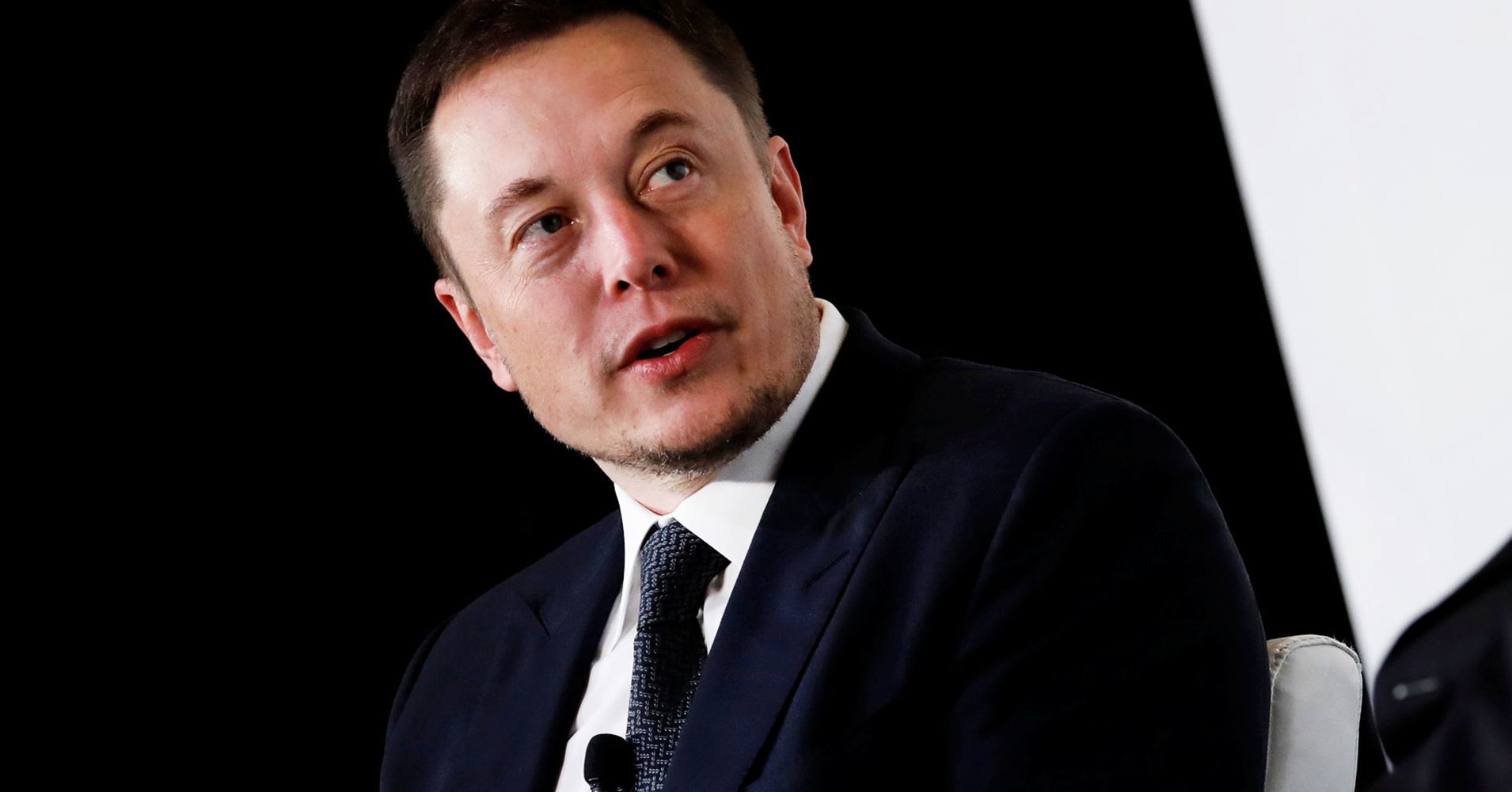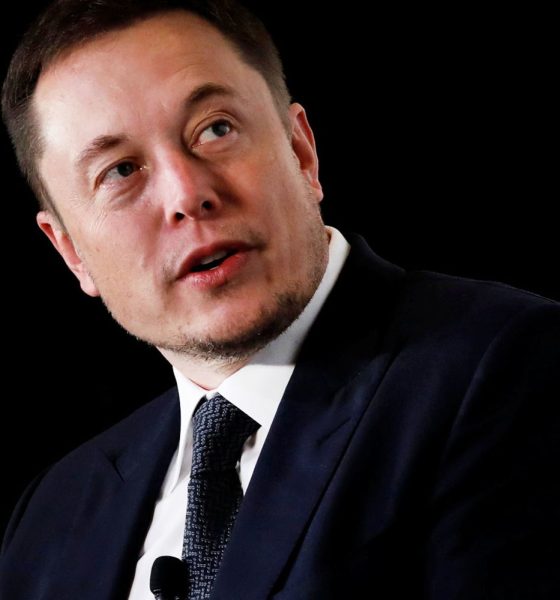

News
Elon Musk is trying to help solve the Flint Water Crisis
After building a mini-submarine to aid in the rescue attempt of the members of the Wild Boar soccer team in Thailand, Elon Musk is now flexing his philanthropic muscles towards a long-standing issue in the United States — the Flint Water Crisis.
Musk previously noted on Twitter that he has already been helping out the citizens of Flint. Spurred on by some Flint residents and activists for the city, however, Musk opted to take a more hands-on approach. The Tesla and SpaceX CEO promptly coordinated with individuals testing the contamination levels of the city’s water system, and by Wednesday, Musk has provided an email address, flint@x.com, where residents can send the results of their water’s ppm (parts per million) and ppb (parts per billion) levels.
Musk’s pledge to help the people of Flint has mostly been met positively by the online community, with several of his followers even offering to lend a hand to a “barnstorming weekend” aimed at installing water filters in the homes of the city’s residents. Musk also reacted favorably to the idea of utilizing Flint’s local plumbers to help in the initiative. Despite being in China to discuss Tesla’s plans of building Gigafactory 3 in Shanghai, Musk further stated that he would call Flint Mayor Karen Weaver about plans to address the city’s water problems.
Gathering input this week, will begin taking action next week and let people know how they can help
— Elon Musk (@elonmusk) July 12, 2018
Just like his efforts to help in the Thailand cave rescue operations, Musk’s pledge to help the city of Flint became a target for his staunch critics online. Key Flint activist Mari Copeny, better known as Little Miss Flint due to her letter to then-president Barack Obama about the ongoing water crisis, clarified Musk’s involvement, however, stating that the city is appreciative of the serial tech entrepreneur’s efforts to help.
Hey world. Let’s set the record straight. My team has been working with @elonmusk and his team for over a week to figure out the best solution to help #Flint with the #FlintwaterCrisis
Extremely grateful for him and all he has done so far.— Mari Copeny (@LittleMissFlint) July 12, 2018
The Flint Water Crisis started in April 2014, after the city’s drinking water source was changed from Lake Huron and the Detroit River to the much cheaper Flint River. Insufficient water treatment caused lead to be leached from lead water pipes into the residents’ drinking water. Lead pipes are viable pipes for water systems, provided that corrosion inhibitors are used to prevent lead from contaminating the water. A common corrosion inhibitor is orthophosphate, which forms low-solubility complexes with the lead in the pipes. Orthophosphates were used in Flint’s systems when the drinking water was coming from Detroit, but when the shift to the Flint River was conducted, no orthophosphate or any other anti-corrosion inhibitors were used. The absence of these inhibitors is behind the harrowing images of rust-colored water coming from Flint’s water supply.
The lead-contaminated water caused several grave problems for Flint’s residents. Between 6,000 to 12,000 children from Flint have been exposed to drinking water with high levels of lead, which could result to serious health problems. The percentage of Flint children with elevated blood-lead levels is estimated to have risen from about 2.5% in 2013 to as much as 5% in 2015 as well. An outbreak of Legionnaires’ Disease, a form of atypical pneumonia with no known vaccine, also resulted in 10 fatalities. The Legionnaires’ outbreak is linked to Flint’s contaminated water supply.

A comparison between Flint’s water coming from the Flint River and the Detroit River. [Credit: Occupy]
The Flint Water Crisis has resulted in several lawsuits being filed against government officials, many of which were accused of mismanaging the situation. Since the water crisis’ peak, however, the Michigan Department of Environmental Quality (MDEQ) has stated that the lead content of Flint’s water has fallen below the federal limit. As of April 2018, the MDEQ issued a statement assuring Flint’s residents that the city’s water quality “has been restored.” Regardless of this, however, many Flint residents remain skeptical that their water is now safe, especially considering that the replacement of the contaminated lead pipes is still ongoing. In this sense, Musk noted on Twitter that the planned “barnstorming” weekend in Flint would not only aim to give residents water filters for their homes; it would also attempt to fix residents’ perception of the city’s water supply.
You’re right on both counts. Most houses in Flint have safe water, but they’ve lost faith in govt test results. Some houses are still outliers. Will organize a weekend in Flint to add filters to those houses with issues & hopefully fix perception of those that are actually good.
— Elon Musk (@elonmusk) July 11, 2018
While Elon Musk’s recent philanthropic ventures are attracting more attention than usual, the SpaceX and Tesla CEO’s humanitarian efforts have actually been going on for some time. It should be noted that Tesla’s big battery in South Australia was started after Musk became aware of the power crisis in the region. After Hurricane Maria ravaged Puerto Rico, Musk also promptly sent a team to help the island nation get back on its feet. As of Musk’s latest update, he noted that there are currently 11,000 projects underway in Puerto Rico.

News
Tesla FSD fleet is nearing 7 billion total miles, including 2.5 billion city miles
As can be seen on Tesla’s official FSD webpage, vehicles equipped with the system have now navigated over 6.99 billion miles.

Tesla’s Full Self-Driving (Supervised) fleet is closing in on almost 7 billion total miles driven, as per data posted by the company on its official FSD webpage.
These figures hint at the massive scale of data fueling Tesla’s rapid FSD improvements, which have been quite notable as of late.
FSD mileage milestones
As can be seen on Tesla’s official FSD webpage, vehicles equipped with the system have now navigated over 6.99 billion miles. Tesla owner and avid FSD tester Whole Mars Catalog also shared a screenshot indicating that from the nearly 7 billion miles traveled by the FSD fleet, more than 2.5 billion miles were driven inside cities.
City miles are particularly valuable for complex urban scenarios like unprotected turns, pedestrian interactions, and traffic lights. This is also the difference-maker for FSD, as only complex solutions, such as Waymo’s self-driving taxis, operate similarly on inner-city streets. And even then, incidents such as the San Francisco blackouts have proven challenging for sensor-rich vehicles like Waymos.
Tesla’s data edge
Tesla has a number of advantages in the autonomous vehicle sector, one of which is the size of its fleet and the number of vehicles training FSD on real-world roads. Tesla’s nearly 7 billion FSD miles then allow the company to roll out updates that make its vehicles behave like they are being driven by experienced drivers, even if they are operating on their own.
So notable are Tesla’s improvements to FSD that NVIDIA Director of Robotics Jim Fan, after experiencing FSD v14, noted that the system is the first AI that passes what he described as a “Physical Turing Test.”
“Despite knowing exactly how robot learning works, I still find it magical watching the steering wheel turn by itself. First it feels surreal, next it becomes routine. Then, like the smartphone, taking it away actively hurts. This is how humanity gets rewired and glued to god-like technologies,” Fan wrote in a post on X.
News
Tesla starts showing how FSD will change lives in Europe
Local officials tested the system on narrow country roads and were impressed by FSD’s smooth, human-like driving, with some calling the service a game-changer for everyday life in areas that are far from urban centers.

Tesla has launched Europe’s first public shuttle service using Full Self-Driving (Supervised) in the rural Eifelkreis Bitburg-Prüm region of Germany, demonstrating how the technology can restore independence and mobility for people who struggle with limited transport options.
Local officials tested the system on narrow country roads and were impressed by FSD’s smooth, human-like driving, with some calling the service a game-changer for everyday life in areas that are far from urban centers.
Officials see real impact on rural residents
Arzfeld Mayor Johannes Kuhl and District Administrator Andreas Kruppert personally tested the Tesla shuttle service. This allowed them to see just how well FSD navigated winding lanes and rural roads confidently. Kruppert said, “Autonomous driving sounds like science fiction to many, but we simply see here that it works totally well in rural regions too.” Kuhl, for his part, also noted that FSD “feels like a very experienced driver.”
The pilot complements the area’s “Citizen Bus” program, which provides on-demand rides for elderly residents who can no longer drive themselves. Tesla Europe shared a video of a demonstration of the service, highlighting how FSD gives people their freedom back, even in places where public transport is not as prevalent.
What the Ministry for Economic Affairs and Transport says
Rhineland-Palatinate’s Minister Daniela Schmitt supported the project, praising the collaboration that made this “first of its kind in Europe” possible. As per the ministry, the rural rollout for the service shows FSD’s potential beyond major cities, and it delivers tangible benefits like grocery runs, doctor visits, and social connections for isolated residents.
“Reliable and flexible mobility is especially vital in rural areas. With the launch of a shuttle service using self-driving vehicles (FSD supervised) by Tesla in the Eifelkreis Bitburg-Prüm, an innovative pilot project is now getting underway that complements local community bus services. It is the first project of its kind in Europe.
“The result is a real gain for rural mobility: greater accessibility, more flexibility and tangible benefits for everyday life. A strong signal for innovation, cooperation and future-oriented mobility beyond urban centers,” the ministry wrote in a LinkedIn post.
News
Tesla China quietly posts Robotaxi-related job listing
Tesla China is currently seeking a Low Voltage Electrical Engineer to work on circuit board design for the company’s autonomous vehicles.

Tesla has posted a new job listing in Shanghai explicitly tied to its Robotaxi program, fueling speculation that the company is preparing to launch its dedicated autonomous ride-hailing service in China.
As noted in the listing, Tesla China is currently seeking a Low Voltage Electrical Engineer to work on circuit board design for the company’s autonomous vehicles.
Robotaxi-specific role
The listing, which was shared on social media platform X by industry watcher @tslaming, suggested that Tesla China is looking to fill the role urgently. The job listing itself specifically mentions that the person hired for the role will be working on the Low Voltage Hardware team, which would design the circuit boards that would serve as the nervous system of the Robotaxi.
Key tasks for the role, as indicated in the job listing, include collaboration with PCB layout, firmware, mechanical, program management, and validation teams, among other responsibilities. The role is based in Shanghai.
China Robotaxi launch
China represents a massive potential market for robotaxis, with its dense urban centers and supportive policies in select cities. Tesla has limited permission to roll out FSD in the country, though despite this, its vehicles have been hailed as among the best in the market when it comes to autonomous features. So far, at least, it appears that China supports Tesla’s FSD and Robotaxi rollout.
This was hinted at in November, when Tesla brought the Cybercab to the 8th China International Import Expo (CIIE) in Shanghai, marking the first time that the autonomous two-seater was brought to the Asia-Pacific region. The vehicle, despite not having a release date in China, received a significant amount of interest among the event’s attendees.








